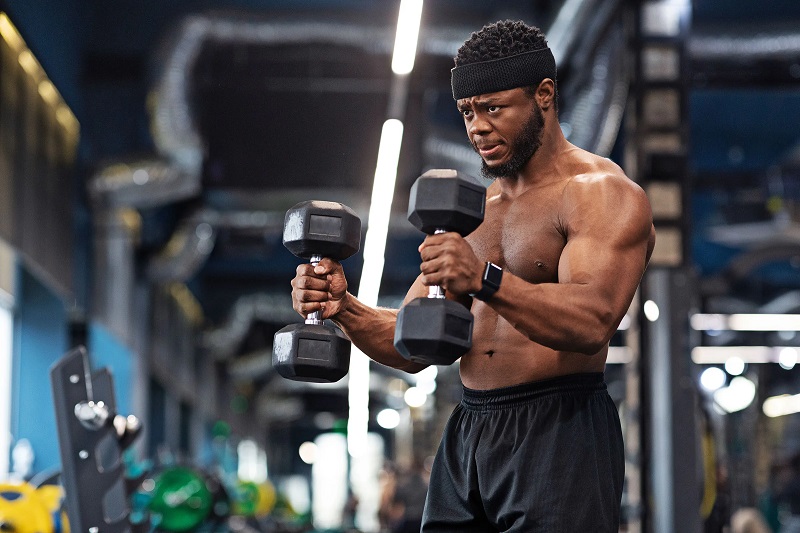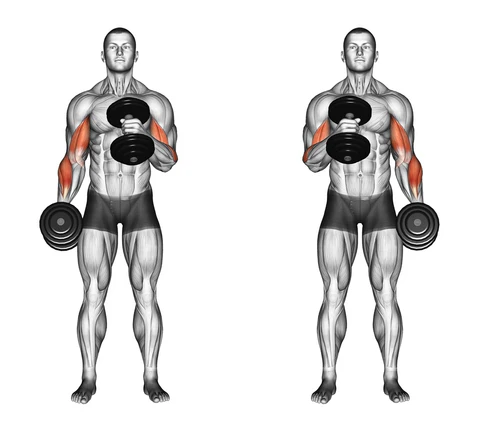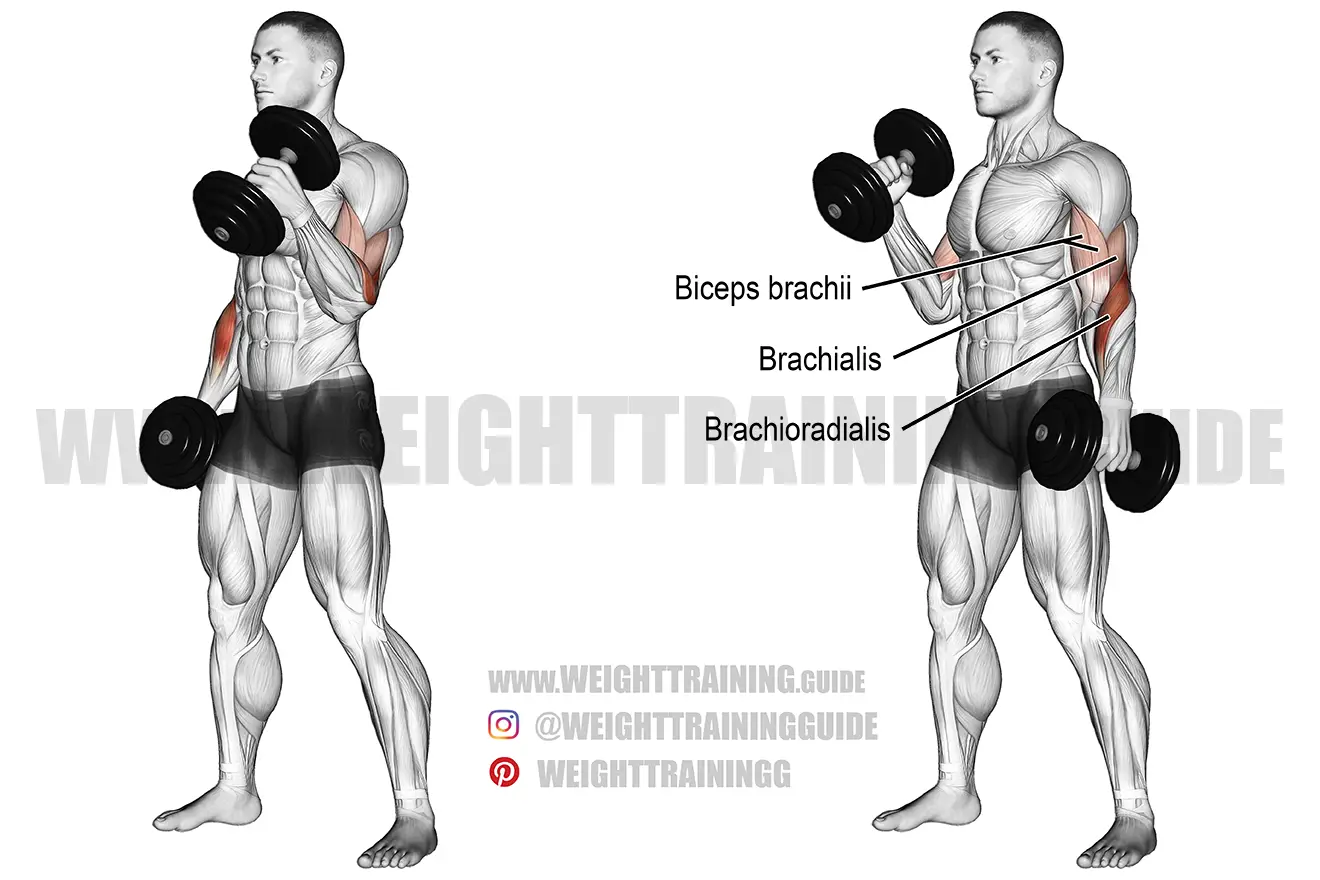Have you ever wondered if hammer curls work the long head?
This is something that is being asked over and over again by strength athletes as hammer curls are one of the most effective exercises to develop wider arms and on the other hand, biceps long head is a primary muscle which athletes want to develop quickly.
Well, wonder no more! In this article, we’ll delve deep into the science behind hammer curls and explore whether they truly target and activate the long head of the biceps. Prepare to be enlightened!
Hammer Curls and Target Muscles

When it comes to building impressive biceps, many people turn to hammer curls as an essential exercise. Hammer curls, which involve holding the dumbbells in a neutral grip (palms facing each other), have been touted as a great way to work not only the biceps brachii but also the brachialis, a muscle located beneath the biceps.
But what about the long head, the muscle that gives the biceps its peak? Does it benefit from hammer curls?
The long head of the biceps is the muscle responsible for creating that coveted biceps peak, giving the arm a more aesthetically pleasing appearance. While regular bicep curls primarily target the short head, hammer curls can effectively engage the long head due to the supination (rotation) of the forearm. When you supinate your forearm during a hammer curl, you activate and stretch the long head, resulting in greater overall bicep development.
Targetting Long Head

But how can you ensure you’re effectively working the long head during your hammer curls? One key tip is to focus on the range of motion. By fully extending your arm at the bottom of each rep, you’ll provide a deep stretch to the long head, maximizing its activation. Additionally, maintaining a controlled eccentric (lowering) phase of the movement will further engage the long head and promote muscle growth.
Another important factor is the weight you choose. To specifically target the long head, it’s crucial to select a weight that allows you to maintain proper form and control throughout the exercise. Using a weight that is too heavy may lead to swinging or using momentum, diminishing the effectiveness of the hammer curl and reducing the engagement of the long head.
Furthermore, incorporating different variations of the hammer curl can also enhance long-head activation. For instance, offset hammer curls, where one dumbbell is held higher than the other, can increase the stretch on the long head, leading to greater muscle activation. Additionally, incorporating incline hammer curls, where the bench is set at a slight incline, puts more emphasis on the long head and can help stimulate growth in this muscle.
The Role of Variation
While hammer curls are a fantastic exercise for targeting the long head of the biceps, it’s important to incorporate a variety of exercises into your routine to ensure optimal muscle growth. By adding different curl variations, such as preacher curls, concentration curls, and cable curls, you can effectively target all heads of the biceps and achieve a well-rounded and proportionate arm development.
Preacher curls, performed on a preacher bench with the upper arms supported, primarily target the long head of the biceps and provide an intense isolation exercise that allows for strict form and focused contractions. Concentration curls, on the other hand, involve sitting or standing with one arm braced against the inner thigh, allowing for a deep stretch and maximal activation of the biceps.
Finally, cable curls, using a cable machine, offer constant tension throughout the entire range of motion, leading to greater muscle fiber recruitment and growth.
Proper Form and Technique

Form and technique are critical when it comes to any exercise, and hammer curls are no exception. To ensure you’re effectively targeting the long head of the biceps, follow these tips:
Firstly, maintain a neutral grip throughout the movement, keeping your palms facing each other. This grip puts less stress on the wrists and promotes better engagement of the long head.
Secondly, maintain a slight bend in your elbows throughout the exercise. This keeps tension on the biceps and prevents the forearms from taking over the movement.
Thirdly, focus on controlling the weight throughout the entire range of motion. Avoid swinging or using momentum to lift the dumbbells, as this diminishes the effectiveness of the exercise and reduces the engagement of the long head.
Finally, squeeze and contract the biceps at the top of each rep. This maximizes muscle activation and promotes growth in the long head.
Frequency and Repetitions
When it comes to training the long head of the biceps, frequency and repetitions play a crucial role. To effectively stimulate growth in this muscle, it’s recommended to incorporate hammer curls into your training routine at least twice a week.
The number of repetitions and sets will vary based on your fitness level and goals. For beginners, aiming for 3-4 sets of 8-12 repetitions can be a good starting point. As you progress, you can increase the number of sets and repetitions to continue challenging the long head and promoting muscle growth.
Nutrition and Recovery

Building the long head of the biceps requires not only proper training but also adequate nutrition and recovery. To support muscle growth, ensure you’re consuming enough protein, as it provides the building blocks for muscle repair and growth. Be sure to take all the necessary vitamins for faster growth.
In addition, prioritize recovery by getting enough quality sleep and allowing your muscles enough time to rest and rebuild. This will ensure optimal muscle growth and prevent overtraining, which can hinder progress in developing the long head of the biceps.
Final Words
So, do hammer curls work the long head? The answer is a resounding yes! By incorporating hammer curls into your routine with proper form, technique, and variation, you can effectively target and activate the long head of the biceps, leading to impressive arm development.

